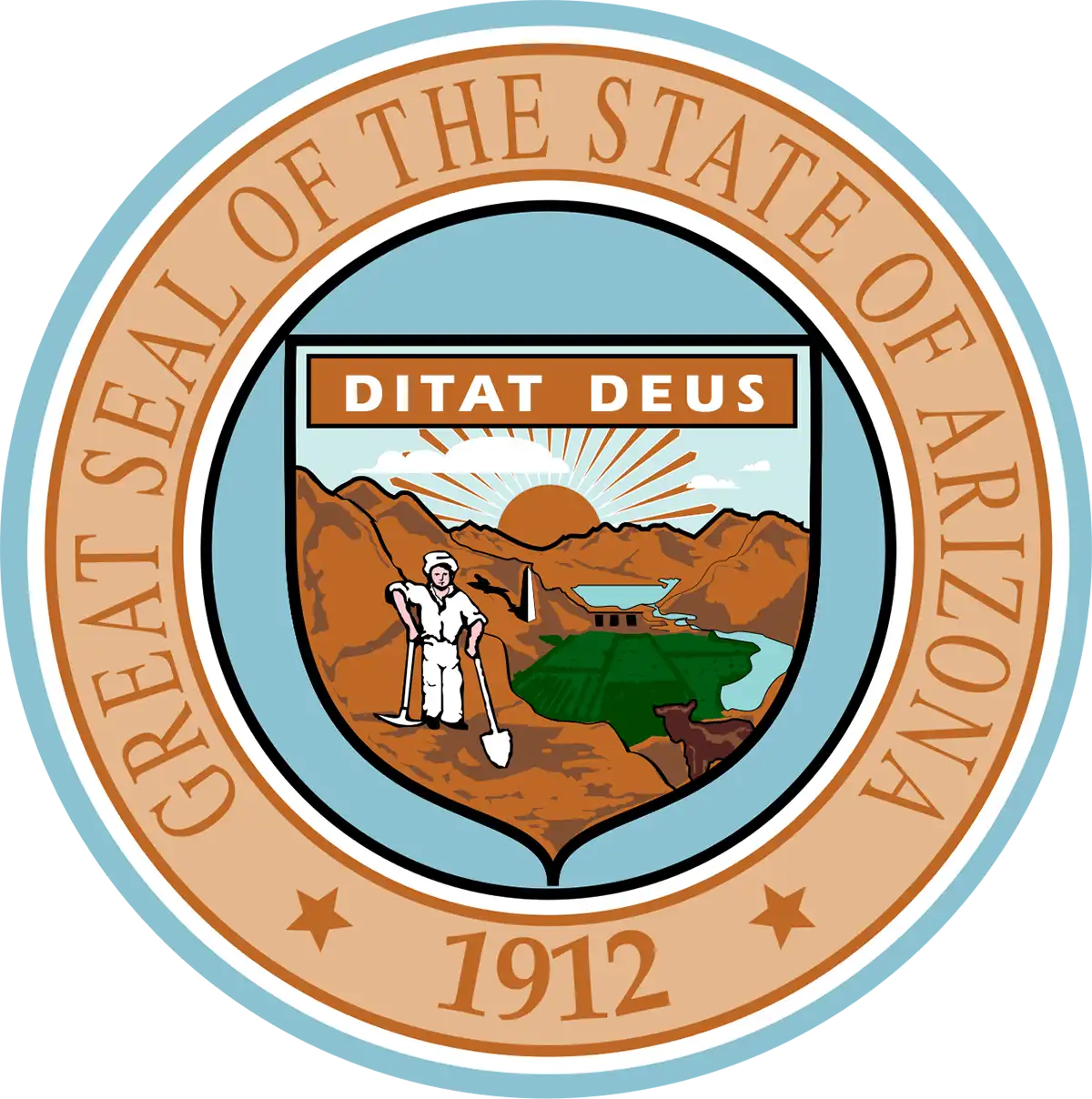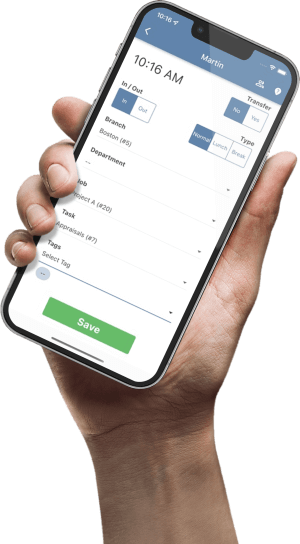Free Arizona Payroll Tax Calculator

Arizona Payroll Tax Calculator (Step-by-Step)
Understanding your paycheck is essential, and our Arizona Payroll Tax Calculator makes it simple. Follow these easy steps to get an accurate estimate of your take-home pay:
Step 1: Enter Your Location and Filing Status
Country: Ensure “United States” is selected. (This is pre-filled.)
Province/State: Choose “Arizona” from the dropdown menu. (This is pre-filled.)
Federal Filing Status: Select your current federal filing status (e.g., Single, Married Filing Jointly, etc.) from the dropdown. This reflects how you file your federal taxes.
Federal Allowances: Enter the number of federal allowances you are claiming. This affects how much federal income tax is withheld. (Use your W-4 form as a guide.)
State Filing Status: Choose your Arizona state filing status from the dropdown. This may match your federal status but confirm using Arizona tax guidance.
State Withholding Percentage: Instead of allowances, Arizona uses a percentage-based system. Choose your Arizona withholding percentage from the dropdown (ranges from 0.0% to 5.1%). (Refer to Form A-4 for help.)
Annual Pay Periods: Select how often you are paid (e.g., Bi-Weekly (26), Weekly, Monthly). This ensures annualized accuracy.
Gross Wage / Pay Period: Enter your total gross earnings per pay period—before taxes and deductions.
Pay Date: Select the pay date using the calendar tool. This is just for reference and does not affect calculations.
Step 2: Input Your Pay Information
Annual Pay Periods: Choose how often you’re paid from the dropdown.
Gross Wage/Pay Period: Enter your full earnings before deductions for each period.
Pay Date: Select the date of payment using the calendar.
Step 3: Calculate Your Taxes
Click the “Calculate” button to see an estimate of your net pay after federal and Arizona taxes.
To make changes, adjust any field and hit “Calculate” again.
Use the “New Calculation” button to reset all fields for a new estimate.
Important Notes:
This calculator uses the latest Arizona income tax brackets and withholding percentages for 2025.
Actual paycheck results may differ based on benefits, deductions (like retirement or health insurance), or changes in state/federal laws.
Arizona does not have local income taxes, which simplifies your calculation.
Make sure your Form A-4 and W-4 are accurate to avoid over- or under-withholding.
Found our Free Arizona Payroll Tax Calculator useful? Bookmark and share it.

Overview of Arizona Payroll Laws in 2025
Arizona’s payroll laws in 2025 introduce key requirements that every employer must follow. These include updated minimum wage rates, withholding procedures, and employer-only tax responsibilities. Staying current with these rules is essential to ensure accurate payroll processing and regulatory compliance.
Minimum Wage Standards
As of January 1, 2025, the statewide minimum wage in Arizona is $14.70 per hour. Tipped employees must be paid a minimum of $11.70 in cash wages, with a tip credit of up to $3.00 allowed. However, some local jurisdictions have higher requirements:
Flagstaff: $17.85 per hour (or $16.85 for tipped employees)
Tucson: $15.00 per hour across all sectors
Employers are required to pay the higher of the state or local minimum wage and display the official Minimum Wage poster prominently at the workplace. Wages are adjusted annually in January based on changes in the Consumer Price Index, so employers should plan for updates each year.
Income Tax Withholding
Arizona applies a flat 2.5% income tax rate on employee wages. While the rate itself is fixed, employees control their withholding percentage by submitting Form A-4, which allows them to choose a rate between 0.5% and 3.5% of their gross wages. If a new employee fails to submit the form within five days of hire, the employer must default to a 2.0% withholding rate.
This flexible system allows employees to fine-tune how much is withheld from their paycheck throughout the year. However, all tax reconciliation is done at year-end based on the standard 2.5% tax rate.
Employer-Paid Unemployment Insurance
Unemployment insurance in Arizona is fully employer-funded. There is no state UI withholding from employee paychecks. For 2025:
The taxable wage base is $8,000 per employee
New employers pay a standard 2.0% UI rate
After two years, an experience-based rate is assigned, ranging from 0.04% to 9.72% depending on claims history
There are no additional local payroll taxes in Arizona, which simplifies overall tax compliance for employers. However, employers must also account for federal unemployment tax (FUTA), generally 0.6% on the first $7,000 of wages, provided state UI contributions are paid on time.
Additional Regulatory Requirements
Beyond wages and taxes, Arizona imposes several additional payroll-related responsibilities:
Employers must provide paid sick leave under the Fair Wages and Healthy Families Act, with a minimum accrual of one hour for every 30 hours worked
All businesses are required to use E-Verify to confirm new hires’ employment eligibility
Employers must report all new hires to the Arizona New Hire Reporting Center within 20 days of hire
At least two fixed paydays per month must be established, with no more than 16 days between pay periods
Step-by-Step Guide to Setting Up Payroll in Arizona
Setting up payroll for a small business in Arizona doesn’t have to be complicated. By breaking it into manageable steps, you can get up and running confidently while ensuring full compliance with 2025 state and federal regulations.
1. Register Your Business and Obtain Tax IDs
Before you can run payroll, you’ll need to register your business and secure the proper tax identification numbers:
Obtain a Federal Employer Identification Number (EIN) from the IRS for federal tax filings.
Register with Arizona state agencies using the Joint Tax Application (Form JT-1), which covers both the Department of Revenue (for withholding tax) and the Department of Economic Security (for unemployment insurance).
Once registered, you’ll receive:
A state withholding account number
A UI (Unemployment Insurance) employer account number
Be sure to store these numbers securely, as they’ll be needed for all payroll filings.
2. Set Up Workers’ Compensation Insurance
Arizona law requires all employers with one or more employees to carry workers’ compensation insurance. You can purchase a policy through a private carrier or the state insurance fund. While not a payroll tax, it’s a mandatory component of payroll setup.
3. Prepare New Hire Paperwork
Every new employee must complete the following forms before being added to payroll:
Form W-4 – Used to determine federal tax withholding.
Arizona Form A-4 – Allows employees to choose their state withholding rate (0.5% to 3.5%). If not returned within 5 days, you must withhold 2.0% by default.
Form I-9 – Verifies employment eligibility. Arizona law also requires that new hires be entered into the E-Verify system within 3 business days.
You’ll also need to submit new hire details to the Arizona New Hire Reporting Center within 20 days of the employee’s start date. This helps the state enforce child support obligations and maintain accurate employment records.
4. Establish a Payroll Schedule and Policies
Set clear expectations for how and when employees will be paid. Arizona law requires at least two paydays per month, spaced no more than 16 days apart. Common payroll frequencies include:
Biweekly (every two weeks)
Semimonthly (15th and last day of the month)
Define your standard workweek for overtime calculations, and ensure that overtime is paid at 1.5x the regular rate for any hours over 40 in a week. Also, establish written policies for:
Paid sick leave (required under Arizona law)
Vacation and time-off accruals
Direct deposit and paycheck delivery options
5. Choose a Payroll System
You can handle payroll manually or use payroll software. Manual payroll requires tracking hours, taxes, and deductions using spreadsheets, while payroll systems can automate:
Gross-to-net calculations
Tax withholding and filings
Pay stub generation
Time tracking and accruals
Solutions like TimeTrex allow you to streamline the entire process—from wage calculations to automated state and federal filings.
6. Calculate Employee Pay and Withholdings
For each pay period, follow this process to calculate net pay:
Start with gross wages
For hourly employees: hours worked × hourly rate
Include overtime where applicable
For salaried employees: divide the annual salary by number of pay periods
Subtract required withholdings:
Federal income tax (based on W-4)
Social Security tax (6.2% up to the wage cap; employer matches)
Medicare tax (1.45%, plus 0.9% additional for wages over $200,000; employer also matches 1.45%)
Arizona state income tax (based on A-4 election, default to 2.0% if no form is received)
Voluntary deductions like health insurance, 401(k), or garnishments
The resulting figure is the employee’s net pay, which you distribute via direct deposit, check, or pay card (with employee consent if using direct deposit).
7. Pay Payroll Taxes and File Returns
With every payroll run, you’re responsible for remitting:
Withheld federal and state income taxes
Employer contributions to Social Security, Medicare, and unemployment insurance
You’ll also need to submit regular reports to the IRS and Arizona state agencies. Use the EFTPS system for federal deposits, and ensure your state filings are submitted by the appropriate deadlines. Many payroll systems can automate this step to prevent errors and missed payments.
8. Maintain Payroll Records
Payroll compliance doesn’t end with issuing paychecks. You must maintain detailed records, including:
Hours worked
Gross and net pay
Deductions and withholdings
Tax payments made
Employee earnings summaries
Federal law typically requires you to keep payroll records for at least four years. Arizona law mandates wage and hour records for a minimum of three years. Using payroll software can make this process easier by automatically archiving data and giving employees access to their pay stubs and PTO balances.


Arizona 2025 Payroll Dates
| Payroll Item | 2025 Rate / Threshold | Key Deadlines |
|---|---|---|
| Minimum Wage (Arizona) |
$14.70/hour (standard), $11.70 (tipped) Flagstaff: $17.85 / $16.85 Tucson: $15.00 |
Effective Jan 1, 2025. Adjust annually. Apply new rates by Jan 1. |
| Arizona Income Tax (State Withholding) |
Flat 2.5% of gross wages Employees elect 0.5%–3.5% on Form A-4 Default 2.0% if no election |
Monthly deposits by 15th (if >$500/yr) Quarterly returns: Apr 30, Jul 31, Oct 31, Jan 31 Annual reconciliation due Jan 31 |
| Arizona Unemployment Insurance (UI/SUTA) |
Taxable wage base: $8,000/employee New employer rate: 2.0% Experience-rated: 0.04% – 9.72% |
Quarterly reports/payments due: Apr 30, Jul 31, Oct 31, Jan 31 Penalties for late filings apply |
| Federal Payroll Taxes (FIT, FICA) |
Federal Income Tax: varies Social Security: 6.2% each (to $176,100) Medicare: 1.45% each; +0.9% over $200k |
Monthly/semi-weekly deposits (per IRS) Form 941: Apr 30, Jul 31, Oct 31, Jan 31 Form 940 & W-2s due Jan 31 |
| New Hire Reporting |
Report all hires within 20 days Include name, SSN, address, employer info |
Submit online, fax, or mail Deadline: 20 days from start date |
| Payday Frequency (Wage Payment) |
At least 2 paydays per month No more than 16 days apart Exceptions for certain employees |
Final pay due within 7 working days or next payday Set a consistent pay schedule |
Payroll Tax Responsibilities and Deadlines (Federal & State)
Once your payroll is up and running, staying compliant becomes an ongoing responsibility. That means accurately withholding taxes, submitting payments on time, and filing regular reports at both the federal and state level. Below is a comprehensive guide to what Arizona employers need to track throughout the year.
Federal Payroll Taxes and Filing Requirements
The federal government requires employers to handle three main tax categories: federal income tax, FICA taxes (Social Security and Medicare), and federal unemployment tax (FUTA).
You must withhold federal income tax from each employee’s paycheck, based on their Form W-4 and the IRS tax tables. The IRS assigns your deposit schedule—either monthly or semiweekly—based on your past tax liability. Most small businesses fall into the monthly category, meaning federal income tax must be deposited by the 15th of the following month.
FICA taxes include Social Security and Medicare. You are responsible for withholding 6.2% for Social Security on wages up to $176,100 and 1.45% for Medicare on all wages. If an employee earns over $200,000, an additional 0.9% Medicare tax applies to the employee portion. As the employer, you must match all FICA taxes. These taxes are reported quarterly using IRS Form 941, which is due at the end of the month following each calendar quarter.
FUTA is a federal unemployment tax paid by employers only. It is calculated at 6.0% on the first $7,000 of wages per employee. However, if you’re compliant with Arizona UI payments, you likely qualify for a credit that reduces your FUTA rate to 0.6%. FUTA deposits are made quarterly unless your liability is less than $500 for the year—in which case, you may pay it annually when you file Form 940 by January 31.
At the end of the year, you must issue Form W-2 to each employee by January 31, summarizing wages and taxes withheld. You must also submit copies of W-2s and a W-3 summary to the Social Security Administration by the same deadline.
Arizona State Payroll Taxes and Filing Requirements
Arizona imposes its own payroll tax responsibilities, primarily related to state income tax withholding and unemployment insurance contributions.
Arizona uses a flat income tax rate of 2.5%, but employees elect a withholding percentage on Form A-4, ranging from 0.5% to 3.5%. If no form is submitted, employers must default to a 2.0% withholding rate. Most small employers in Arizona remit state withholding taxes monthly by the 15th of the following month. If your total state withholding liability is small (typically under $500 annually), you may be allowed to file and pay quarterly.
All employers, regardless of payment schedule, must submit a quarterly Arizona withholding return, using Form A1-QRT. Due dates follow the federal schedule: April 30, July 31, October 31, and January 31. An annual reconciliation form, A1-R, is also due by January 31 and should align with the employee W-2s submitted.
For unemployment insurance, employers must report wages and pay contributions quarterly to the Department of Economic Security. New Arizona employers pay a standard rate of 2.0% on the first $8,000 in wages per employee. Experienced employers are assigned a rate ranging from 0.04% to 9.72%, based on their claims history. Reports and payments are due the last day of the month following each quarter. These filings can be completed through the DES Tax and Wage System.
Additional State Compliance Requirements
Arizona does not impose local income taxes, so there is no need to handle city- or county-level payroll taxes. However, Arizona requires prompt new hire reporting within 20 days of an employee’s start date. This reporting includes key identifying information and is used primarily for child support enforcement.
Wage payments must be made at least twice a month, with no more than 16 days between pay periods. For terminated employees, Arizona requires final wages to be paid within seven working days or by the next payday—whichever comes first.
Best Practices to Stay Compliant
Late payments and missed filings can lead to steep penalties, so it’s important to stay organized. Mark all tax deadlines on your calendar and consider using payroll software to automate deposits and reminders. Always submit tax payments through official portals like EFTPS for federal taxes or AZTaxes for state obligations.
Accurately classifying employees is another critical area. Misclassifying workers as independent contractors when they should be treated as employees can result in back taxes, fines, and audits. If you direct how and when the work is performed, the individual likely qualifies as an employee and must be included in payroll.
Overtime must be calculated according to the Fair Labor Standards Act. Arizona follows federal standards, which generally require time-and-a-half for hours worked beyond 40 in a week. Be sure to keep complete time records and ensure employees verify and approve their hours worked.
Payroll records must be retained for several years. Federal guidelines suggest keeping them for at least four years, while Arizona requires wage and hour records for at least three. Include documentation such as pay stubs, tax forms, and proof of payments in your archive. A digital payroll system can make this process seamless.
Labor law posters must also be up to date. Employers are required to display notices regarding minimum wage, paid sick time, and other worker protections in a visible area of the workplace. If laws change, make sure to replace posters promptly.
Arizona’s earned paid sick time law adds another layer of complexity. Employers with fewer than 15 employees must provide at least 24 hours of paid sick leave annually; larger businesses must provide 40. Sick time accrues at a rate of one hour per 30 hours worked, and payroll systems must track balances accurately. Sick pay must be issued at the employee’s regular rate of pay.
Common payroll mistakes include borrowing from tax withholdings to cover operating expenses, missing deposit deadlines, or paying workers under the table. Avoid these practices entirely. Payroll taxes are considered trust fund money by the IRS—failure to remit them can result in serious penalties or criminal charges. To avoid risk, many businesses maintain a separate account just for payroll tax funds.
Whenever possible, use direct deposit and electronic tax filing. Arizona allows direct deposit with written employee consent, and electronic filing minimizes processing errors and ensures quick confirmation of payments. Most modern payroll platforms can handle these tasks automatically.
Staying compliant with payroll obligations requires organization, discipline, and the right tools. In the next section, we’ll explore how a system like TimeTrex can simplify every step of the payroll process, from pay calculation to tax filing and reporting.
Streamlining Payroll with TimeTrex Software
Managing payroll manually—tracking employee hours, calculating taxes, and preparing forms—can be tedious and error-prone. TimeTrex is an advanced payroll software solution designed to eliminate those challenges by automating and simplifying every stage of the payroll process. For Arizona businesses, it’s an ideal tool to ensure accuracy, compliance, and efficiency.
Automated Tax Calculations
TimeTrex automatically calculates federal, state, and local taxes using the latest regulations, including Arizona’s flat 2.5% income tax rate. The system handles:
Real-time withholding calculations based on employee elections
Adjustments for Social Security caps and Medicare thresholds
Automatic recalculations when laws change or wage caps are met
By entering your Arizona location and the employee’s A-4 selection, TimeTrex ensures each paycheck is accurate and compliant—no manual lookups required.
Built-In Compliance Management
TimeTrex is pre-configured to align with Arizona-specific rules, including:
State and local minimum wage enforcement
Overtime calculations for hours exceeding 40 in a week
Multi-state payroll logic for remote or out-of-state employees
Alerts for missing tax forms or late filings
This level of automation minimizes the risk of penalties by catching compliance issues before they happen.
Simplified Tax Filings
The software generates and manages the tax forms you need:
Federal: Forms 941, 940, W-2, W-3
State: Quarterly A1-QRT and annual A1-R for Arizona withholding
Year-end: Complete employee wage statements and summaries
You can electronically file many of these forms directly from the platform, streamlining quarter-end and year-end processes without jumping between portals or mailing paperwork.
Integrated Time and Attendance
TimeTrex links time tracking directly into payroll, meaning you no longer need to re-enter hours manually. Features include:
Time clock options, including biometric verification
Scheduling and attendance tracking
Automatic overtime and paid sick time calculations
Real-time data syncing from hours worked to wages earned
If an employee works 42 hours in one week, the system automatically calculates and includes overtime pay in payroll.
Direct Deposit and Employee Access
With TimeTrex, you can pay employees electronically through direct deposit. Additional capabilities include:
Splitting pay between multiple employee bank accounts
Funding payroll from one or more employer accounts
Issuing secure, professional digital pay stubs
Allowing employees to view pay history, tax withholdings, and PTO balances online
This reduces payroll-related questions and enhances transparency.
Recordkeeping and Custom Reports
Each payroll run is automatically recorded and stored. From there, you can generate reports on:
Payroll summaries by employee, department, or date
Tax liabilities and payment histories
Labor cost trends and budgeting forecasts
Year-over-year comparisons
This makes it easy to respond to audits, prepare for tax season, or analyze payroll expenses at a glance.
Automatic Regulatory Updates
As regulations change, TimeTrex updates itself. You don’t need to research new wage caps or tax laws—TimeTrex does it for you. Whether Arizona raises its minimum wage, updates the UI wage base, or introduces new sick leave rules, the system ensures your calculations stay compliant.
Reduced Admin Time and Error Risk
What once took hours—calculating taxes, preparing checks, filing returns—now takes minutes. TimeTrex:
Eliminates manual math and reduces data entry errors
Offers seamless integration with accounting and HR systems
Automates routine payroll functions so you can focus on business growth
You’ll spend less time fixing mistakes and more time making strategic decisions.
Scalable Support for Growing Businesses
Whether you’re managing five employees or expanding across multiple states, TimeTrex grows with you. Features that support business scaling include:
Multi-state and multi-country payroll compliance
Scalable scheduling and approval workflows
System warnings for potential compliance issues
Access to help articles, customer support, and training resources
As your team grows, TimeTrex remains a reliable partner in keeping your payroll accurate and compliant.

Disclaimer: The content provided on this webpage is for informational purposes only and is not intended to be a substitute for professional advice. While we strive to ensure the accuracy and timeliness of the information presented here, the details may change over time or vary in different jurisdictions. Therefore, we do not guarantee the completeness, reliability, or absolute accuracy of this information. The information on this page should not be used as a basis for making legal, financial, or any other key decisions. We strongly advise consulting with a qualified professional or expert in the relevant field for specific advice, guidance, or services. By using this webpage, you acknowledge that the information is offered “as is” and that we are not liable for any errors, omissions, or inaccuracies in the content, nor for any actions taken based on the information provided. We shall not be held liable for any direct, indirect, incidental, consequential, or punitive damages arising out of your access to, use of, or reliance on any content on this page.
Trusted By
Trusted by 3.2M+ Employees: 21 Years of Service Across Startups to Fortune 500 Enterprises
Join our ever-growing community of satisfied customers today and experience the unparalleled benefits of TimeTrex.










Strength In Numbers
Join The Companies Already Benefiting From TimeTrex
Time To Clock-In
Start your 30-day free trial!
Experience the Ultimate Workforce Solution and Revolutionize Your Business Today
- Eliminate Errors
- Simple & Easy To Use
- Real-time Reporting

Saving businesses time and money through better workforce management since 2003.
Copyright © 2025 TimeTrex. All Rights Reserved.
